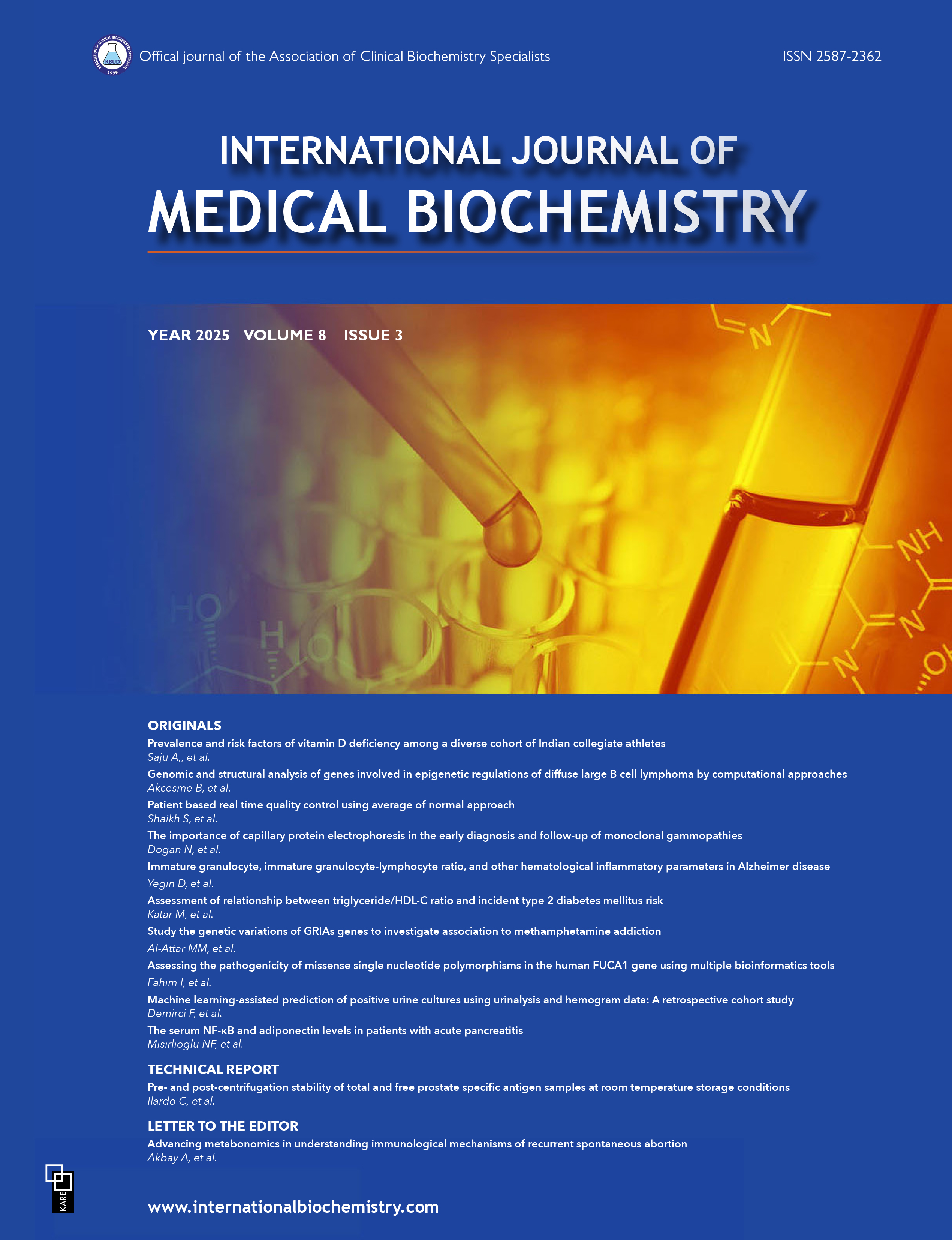Evaluation of oxidative stress in gout disease; thiol-disulfide homeostasis and ischemia-modified albumin levels
Ahmet Rıfat Balık1, Ahmet Omma2, Sevinç Can Sandıkçı3, Çiğdem Yücel1, Murat Kızılgün1, Zeynep Büşra Balık4, Esra Fırat Oğuz5, Salim Neselioglu5, Özcan Erel51Department of Medical Biochemistry, University of Health Sciences, Gülhane Training and Research Hospital, Ankara, Turkey2Department of Rheumatology, Ankara City Hospital, Ankara, Turkey
3Department of Rheumatology, Diskapi Yildirim Beyazit Training and Research Hospital, Ankara, Turkey
4Department of Dermatology, University of Health Sciences, Gulhane Training and Research Hospital, Ankara, Turkey
5Department of Medical Biochemistry, Ankara City Hospital, Ankara, Turkey
INTRODUCTION: Gout is a common and easily treated disease characterized by the accumulation of monosodium urate crystals in both joints and other tissues. Monosodium urate crystals are the main stimulants for initiating and maintaining an inflammatory response. Oxidative stress is also an early change in gout pathogenesis together with inflammation. This study aimed to investigate the presence of oxidative stress in gout together with thioldisulfide homeostasis and ischemia-modified albumin (IMA) levels. We aimed to compare these parameters with inflammation marker C-reactive protein (CRP) and high-sensitivity C-reactive protein (hsCRP).
METHODS: Levels of native thiol, total thiol, disulfide, IMA, CRP, and hsCRP were detected in patients with gout (n=50) and healthy subjects (n=50). Students t-test and the Mann-Whitney U test were used for istatistical analysis.
RESULTS: Native thiol, total thiol, and index 3 (native thiol/total thiol×100) were significantly lower in the patient group, while disulfide, index 1 (disulfide/native thiol×100), index 2 disulfide/total thiol×100), IMA, CRP, and hsCRP were significantly higher. In addition, elevation in native thiol, total thiol, and disulfide levels was detected as disease duration increased.
DISCUSSION AND CONCLUSION: The present study has shown the role of oxidant damage in gout disease. Additional studies are needed to identify sources of oxidative stress in gout.
Manuscript Language: English






